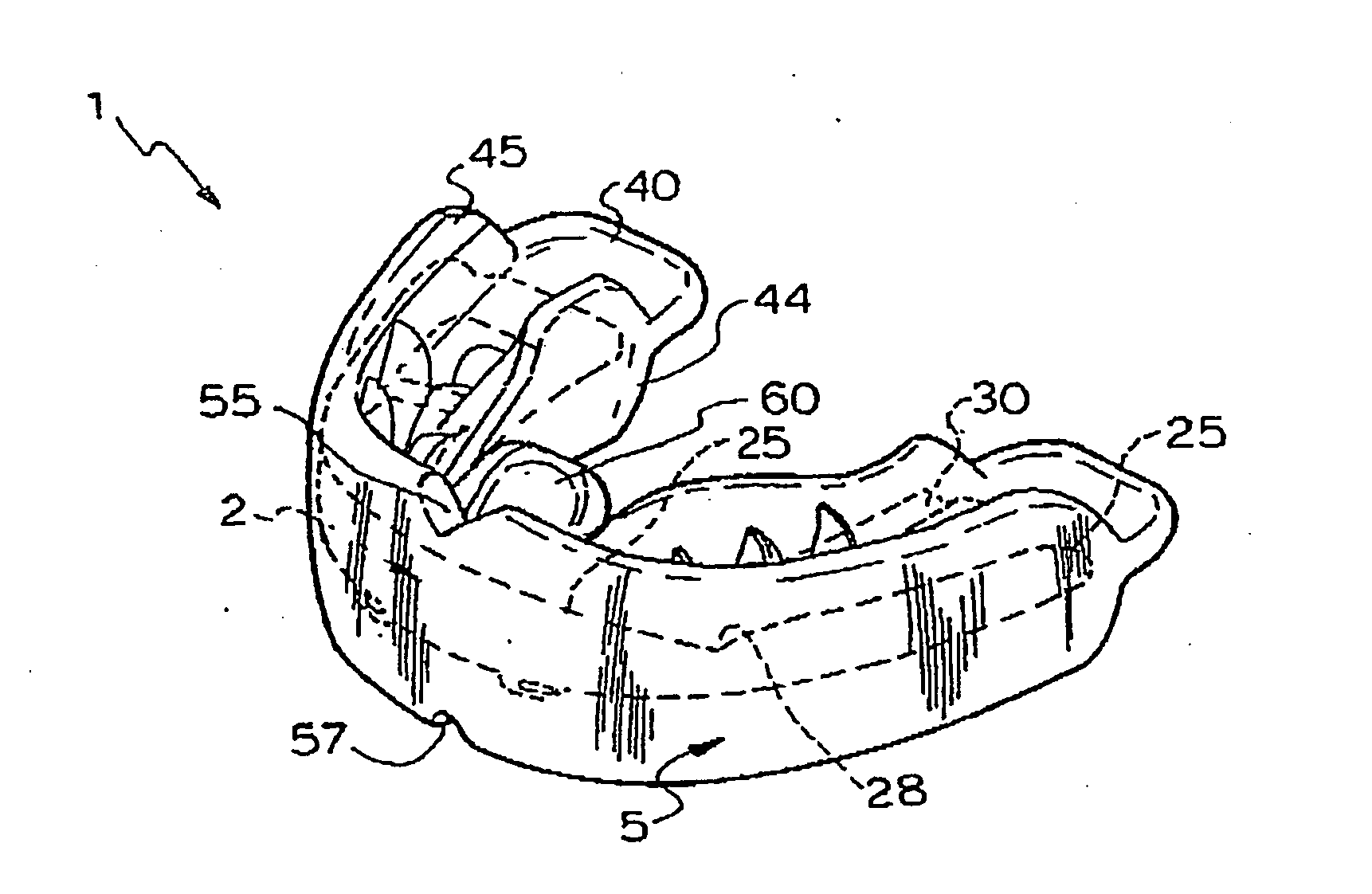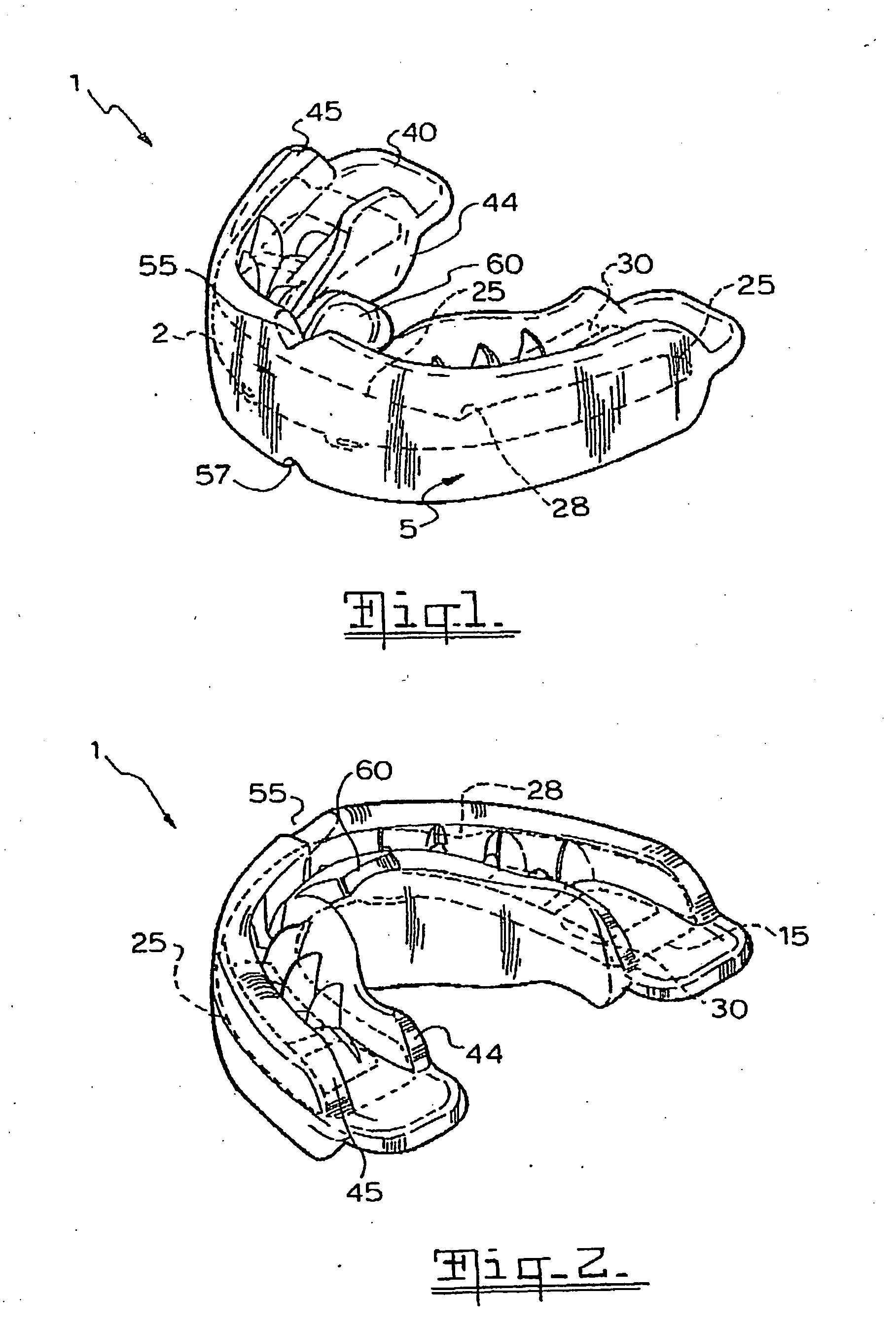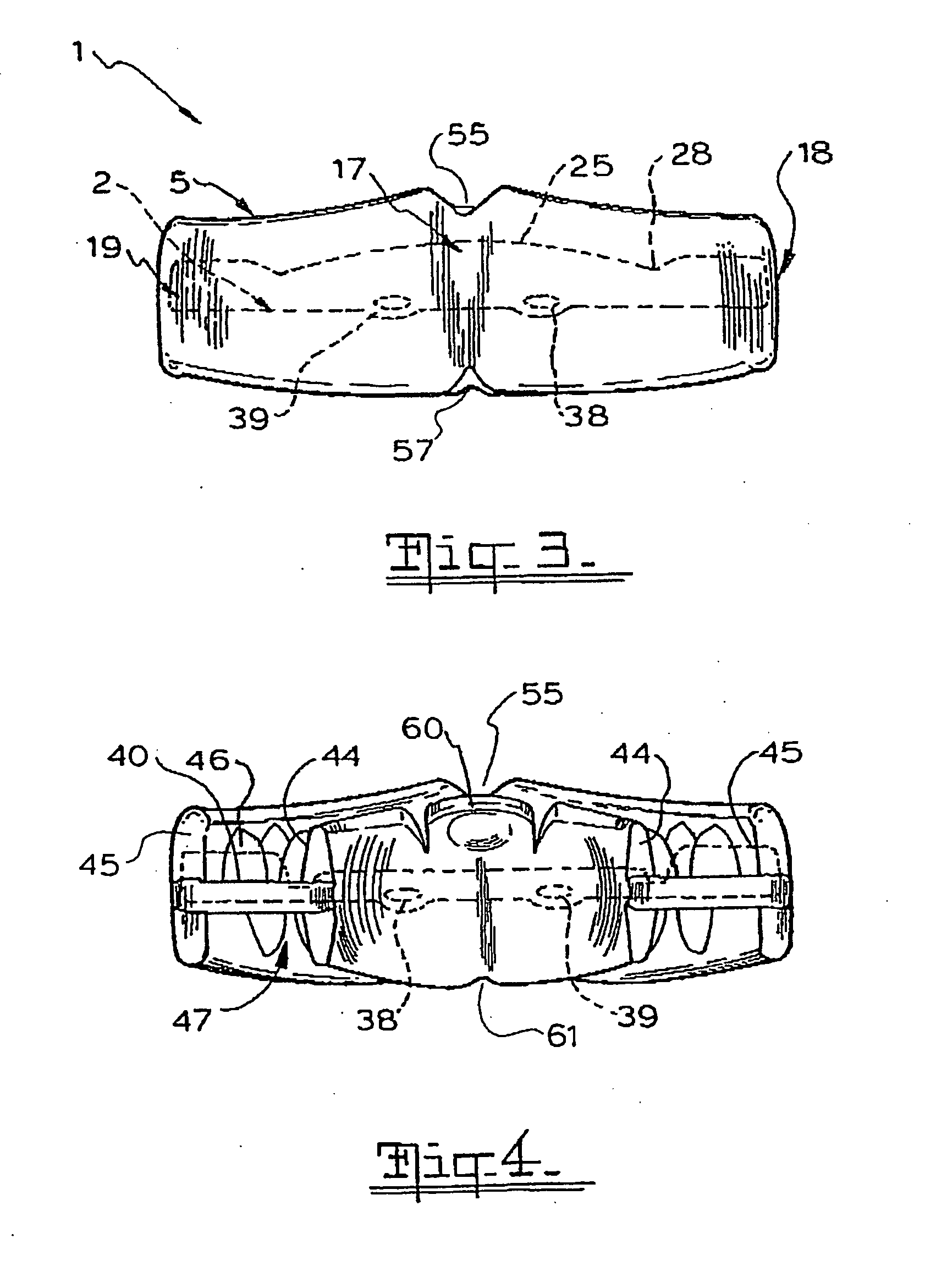Orthodontic appliance
a technology for orthodontic appliances and braces, applied in the field of orthodontic appliances, can solve the problems of affecting the appearance of patients, affecting the patient's appearance, and the brackets of braces are generally unsightly, and achieve the effect of energizing the relaxation of muscles
- Summary
- Abstract
- Description
- Claims
- Application Information
AI Technical Summary
Benefits of technology
Problems solved by technology
Method used
Image
Examples
Embodiment Construction
[0095]An orthodontic appliance in accordance with this invention may manifest itself in a variety of forms. It will be convenient to hereinafter provide a detailed description of at least one embodiment of the invention with reference to the accompanying drawings. The purpose of providing this detailed description is to instruct persons having an interest in the subject matter of the invention how to put the invention into practice. It is to be clearly understood however that the specific nature of this detailed description does not supersede the generality of the preceding statements. In the drawings:
[0096]FIG. 1 is an upper three dimensional view of an orthodontic appliance that is an orthodontic appliance in accordance with one embodiment of the invention, viewed from the front;
[0097]FIG. 2 is an upper rear three dimensional view of the appliance of FIG. 1, viewed from the rear;
[0098]FIG. 3 is a front view of the appliance of FIG. 1;
[0099]FIG. 4 is a rear view of the appliance of...
PUM
 Login to View More
Login to View More Abstract
Description
Claims
Application Information
 Login to View More
Login to View More - R&D
- Intellectual Property
- Life Sciences
- Materials
- Tech Scout
- Unparalleled Data Quality
- Higher Quality Content
- 60% Fewer Hallucinations
Browse by: Latest US Patents, China's latest patents, Technical Efficacy Thesaurus, Application Domain, Technology Topic, Popular Technical Reports.
© 2025 PatSnap. All rights reserved.Legal|Privacy policy|Modern Slavery Act Transparency Statement|Sitemap|About US| Contact US: help@patsnap.com



